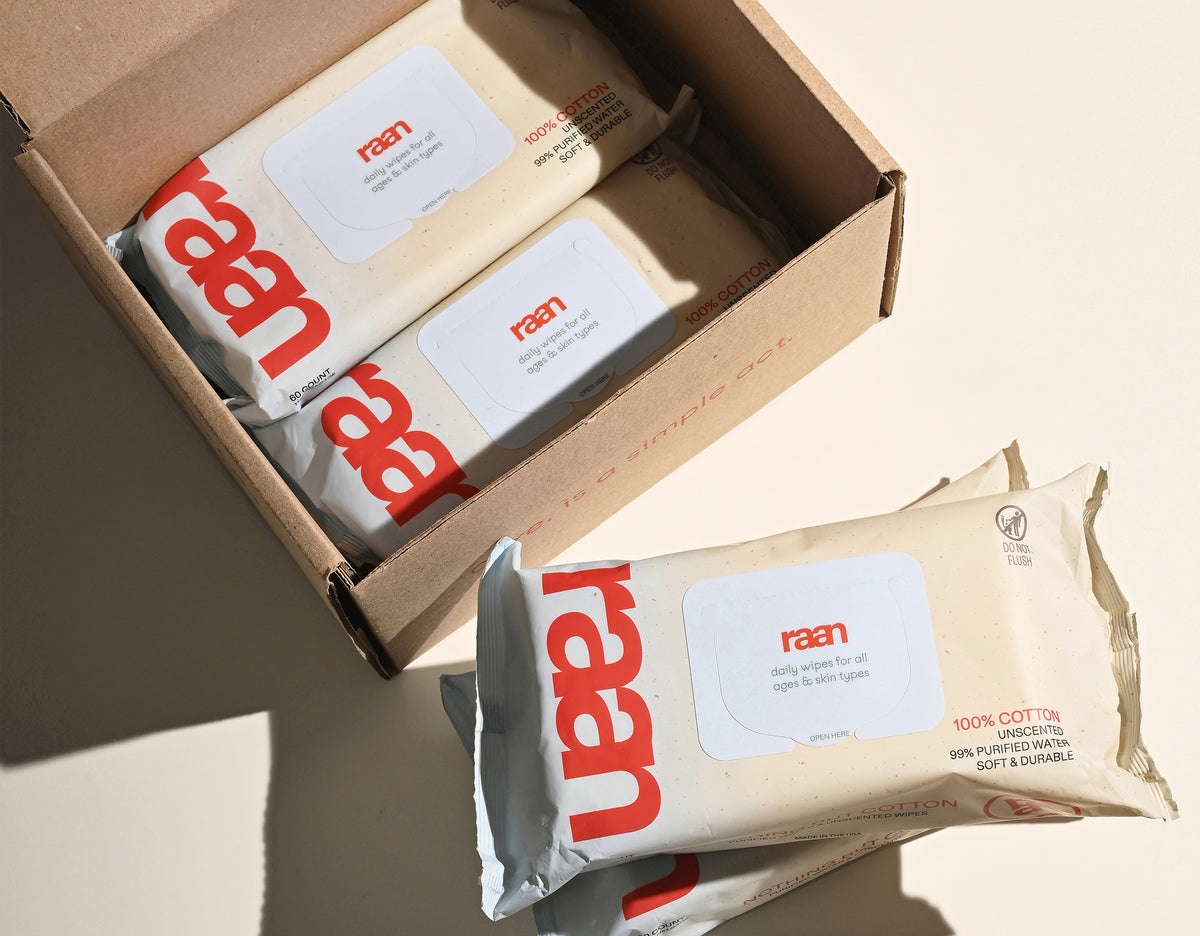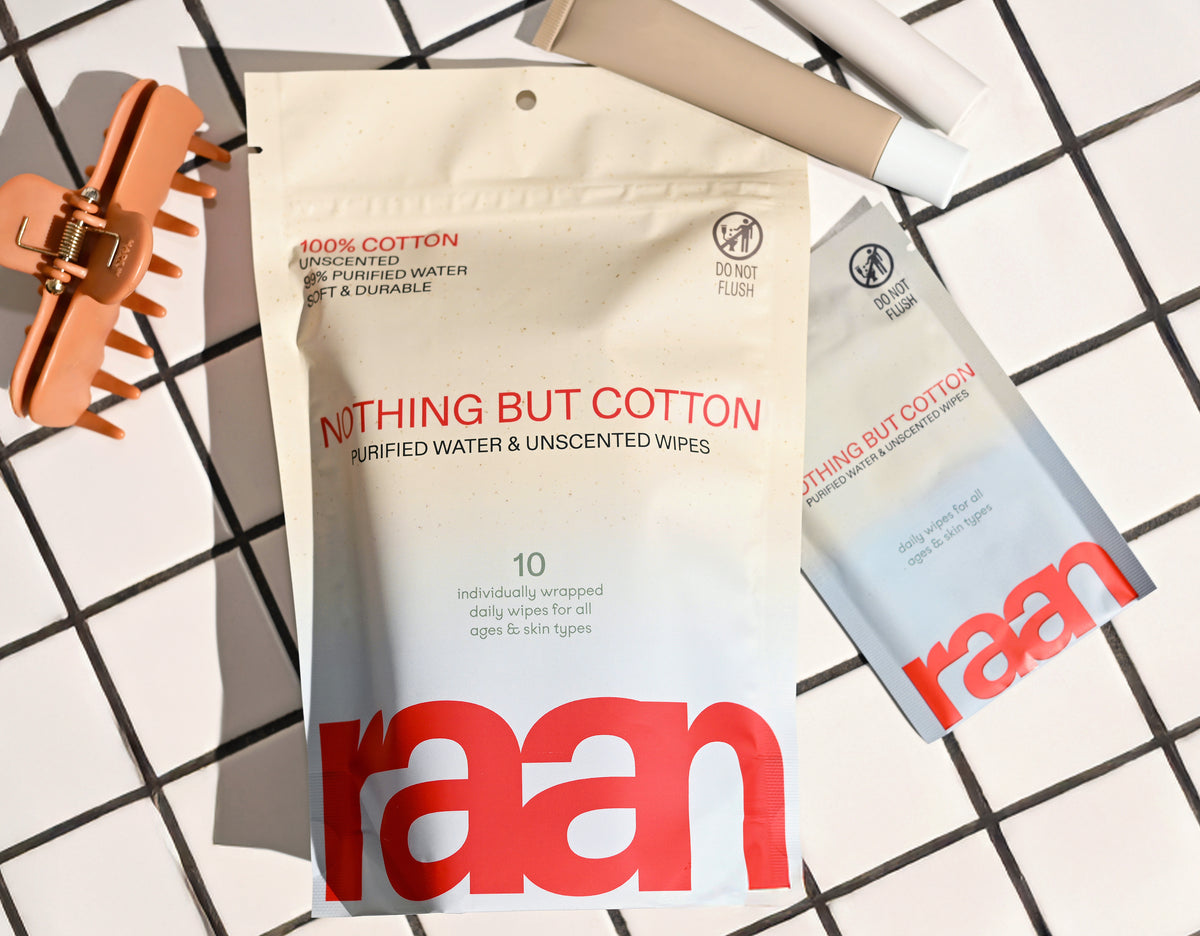Key Takeaways
- Choosing the best non toxic baby wipes should be straightforward and not require advanced chemistry knowledge.
- Many brands use misleading "natural" claims that can confuse parents about product safety.
- Conventional baby wipes often contain plastic fibers, synthetic preservatives, and undisclosed fragrances.
- These ingredients can irritate sensitive skin and contribute to unnecessary environmental waste.
- Parents need transparent and honest information to select truly safe baby wipes for their families.
Table of Contents
- Why Non Toxic Baby Wipes Matter, What "Clean" Really Means Today
- Decoding Labels, The Must-Avoid Chemicals (and the Science Behind Them)
- What Should Be in Your Wipes? The Science of Safe, Minimalist Formulas
- Beyond Ingredients, Material Science & the Hidden Truth About What You're Using
- The Best Non Toxic Baby Wipes, Top Picks and What Sets Them Apart
- How to Read Baby Wipe Labels Like a Pro, A Practical Ingredient Decoder
- Non Toxic vs. Conventional Baby Wipes, A Transparent, Point-by-Point Comparison
- Certifications Demystified, What Seals Actually Mean (And Which Ones Matter)
- Real-Life Scenarios, Using Non Toxic Wipes Beyond the Changing Table
- Final Thoughts and Actionable Takeaways, Choosing What's Truly Best for You
The Best Non Toxic Baby Wipes, How to Choose Safe, Honest Options for Real Life
Finding the best non toxic baby wipes shouldn't require a chemistry degree, but most brands make it feel that way. Between misleading "natural" claims and ingredient lists longer than grocery receipts, parents are left guessing what's actually safe for their family's skin. The truth? Most conventional wipes contain plastic fibers, synthetic preservatives, and undisclosed fragrances that can irritate sensitive skin and create unnecessary waste.
Real non toxic wipes are built differently, with minimal, transparent ingredients and materials that work without compromise. They're made for new moms navigating diaper changes, busy parents managing daily messes, and anyone who wants genuinely safe products that actually function. The Only Unbleached, 100% Cotton Baby Wipe for Sensitive Skin is a standout example, offering uncompromising purity for families who refuse to settle for less.
This guide cuts through the marketing noise to help you identify truly clean options that deliver on both safety and performance. If you need a convenient, on-the-go solution, the Unbleached, 100% Cotton Pocket Wipe for Sensitive Skin is perfect for travel, diaper bags, or quick cleanups wherever life takes you.
Why Non Toxic Baby Wipes Matter, What "Clean" Really Means Today
Non toxic baby wipes contain only safe, necessary ingredients without harmful chemicals that can disrupt skin barriers or hormonal systems. Unlike conventional options packed with 15-20 synthetic additives, truly clean wipes use 3-6 transparent ingredients, typically purified water, food-grade preservatives, and gentle skin conditioners like organic aloe.
The stakes matter for everyone, not just babies. Conventional wipes often contain phthalates (hormone disruptors), formaldehyde releasers (carcinogens), and plastic microfibers that don't biodegrade. These ingredients accumulate in landfills and can trigger contact dermatitis, especially on sensitive skin. Studies show that babies using fragrance-free, minimal-ingredient wipes experience 40% fewer diaper rashes compared to those using conventional alternatives.
Common "clean" claims like "plant-based" or "unscented" often mislead. "Plant-based" can still mean synthetic processing, while "unscented" may contain masking fragrances. Real transparency means listing every ingredient's source and purpose, something most major brands avoid.
Decoding Labels, The Must-Avoid Chemicals (and the Science Behind Them)

Certain ingredients have no place in products touching your skin daily. Here's what to walk away from instantly:
| Ingredient to Avoid | What It Does | Why It's Problematic | Safer Alternative |
|---|---|---|---|
| Parabens (methylparaben, propylparaben) | Prevents bacterial growth | Mimics estrogen, disrupts hormones | Sodium benzoate (food-grade) |
| Fragrance/Parfum | Adds scent | Contains undisclosed phthalates | Unscented formulation |
| Formaldehyde releasers (DMDM hydantoin) | Preserves product | Releases carcinogenic formaldehyde | Potassium sorbate |
| PEGs (polyethylene glycol) | Helps ingredients penetrate skin | Often contaminated with carcinogens | Ethylhexylglycerin |
| Phenoxyethanol | Antimicrobial preservative | Can cause eczema, nervous system effects | Natural preservation system |
Even "water-based" isn't automatically safe. Many water-based wipes still contain synthetic surfactants and undisclosed processing aids. The key is reading the full ingredient list, if it's longer than six items or contains words you can't pronounce, keep looking.
What Should Be in Your Wipes? The Science of Safe, Minimalist Formulas
The best non toxic baby wipes contain only what's necessary for gentle, effective cleaning. Here's what belongs in a truly safe formula:
Purified water (90-99%) forms the base, providing gentle cleansing without harsh detergents. Food-grade preservatives like sodium benzoate and potassium sorbate prevent bacterial growth using the same compounds that keep your food safe. Skin conditioners such as organic aloe vera maintain moisture without synthetic emollients.
pH balancers like citric acid ensure the wipe matches your skin's natural acidity (around 5.5), preventing irritation. Ethylhexylglycerin acts as a natural skin conditioner and preservative booster, derived from glycerin.
The Only Ingredients You Need: Purified water, food-grade preservatives (sodium benzoate, potassium sorbate), ethylhexylglycerin (skin-conditioning), organic aloe (moisturizer), and citric acid (pH balance).
If you want to learn more about how to choose the safest options, check out this in-depth guide on best baby wipes non toxic for additional research and recommendations.
Beyond Ingredients, Material Science & the Hidden Truth About What You're Using
The fabric touching your skin matters as much as what's soaked into it. Most conventional wipes use polyester blends or synthetic materials that feel smooth initially but break down into microplastics over time. These synthetic fibers can irritate sensitive skin and contribute to environmental waste that persists for decades.
Unbleached, 100% cotton offers superior absorbency, biodegradability, and gentleness. Unlike bamboo or plant-based alternatives that require chemical processing to achieve softness, cotton maintains its natural structure and strength. The unbleached aspect eliminates chlorine exposure, a common irritant that can disrupt skin pH and cause reactions in newborns and adults with sensitive skin.
| Material | Breakdown Time | Skin Feel | Environmental Impact |
|---|---|---|---|
| 100% Cotton (unbleached) | 2-5 months | Naturally soft, absorbent | Biodegradable, no microplastics |
| Bamboo/Plant Fiber | 3-6 months | Processed smooth texture | Chemical processing required |
| Polyester Blend | 200+ years | Initially smooth, degrades | Microplastic shedding, landfill waste |
Raan wipes use unbleached, 100% cotton exclusively, no synthetic blending, no chemical whitening. This choice delivers the durability needed for real messes while ensuring complete biodegradability and skin compatibility across all ages. For families who want a ready-to-go solution for any situation, the mess-ready pack is a convenient option that doesn't compromise on safety or sustainability.
The Best Non Toxic Baby Wipes, Top Picks and What Sets Them Apart

After evaluating ingredients, materials, and certifications, these best non toxic baby wipes represent the cleanest, most transparent options available. Each serves different needs while maintaining safety standards that protect sensitive skin and environmental health.
Raan Cotton Wipes - The Minimalist Standard
Best for: Sensitive skin, newborns, and anyone seeking maximum transparency
Raan sets the benchmark with just five EWG-verified ingredients and unbleached, 100% cotton material. The formula contains 99% purified water and organic aloe, with food-grade preservatives (sodium benzoate and potassium sorbate) that maintain safety without synthetic additives. EWG Verified certification ensures every ingredient meets the strictest safety standards.
Why Raan Leads: Only wipe with complete ingredient transparency, unbleached cotton, and 70% less plastic packaging. Winner of 2025 National Parenting Product Awards and Baby Innovation Award.
Water Wipes - Pure Hydration Focus
Best for: Parents prioritizing water content above all else
Water Wipes built their reputation on 99.9% water with a single preservative. While effective for basic cleaning, the synthetic material and minimal moisturizing properties make them less suitable for extended use on sensitive areas.
Honest Company - Plant-Based Alternative
Best for: Families seeking plant-derived ingredients with mainstream availability
Honest Company offers plant-based formulations with chamomile and aloe. However, their ingredient lists include more components than necessary, and some formulations contain fragrances that can trigger sensitivities in reactive skin types.
Bambo Nature - Eco-Conscious Choice
Best for: Environmental focus with European safety standards
Bambo Nature wipes feature sustainable sourcing and minimal chemical processing. The bamboo fiber requires more processing than cotton but offers good biodegradability. Their preservative system relies on multiple compounds rather than the simpler food-grade approach.
When choosing among the best non toxic baby wipes, consider your primary needs: maximum ingredient transparency (Raan), water-focused simplicity (Water Wipes), plant-based variety (Honest), or eco-packaging innovation (Bambo). Each serves specific preferences while maintaining non-toxic standards. For a complete starter bundle that covers all your needs, the starter set is an excellent way to try multiple options at once.
How to Read Baby Wipe Labels Like a Pro, A Practical Ingredient Decoder
Effective label reading starts with the ingredients list, not marketing claims on the front panel. Ingredients appear in descending order by weight, so the first five components make up the majority of your wipe's formula. Water should always be first, if it's not, question what's taking up that space.
Scan for preservative transparency. Safe options include sodium benzoate, potassium sorbate, or citric acid, all food-grade compounds. Avoid vague terms like "natural preservative system" or "plant-based preservatives" without specific ingredient names. These often hide synthetic compounds under appealing language.
Pro Scanning Method: Read backwards from the last ingredient. Fragrances, dyes, and problematic preservatives typically appear at the end of lists.
For more tips on ingredient decoding and label reading, you may find this article on best baby wipes for sensitive skin especially helpful.
Non Toxic vs. Conventional Baby Wipes, A Transparent, Point-by-Point Comparison
The difference between non toxic and conventional wipes goes far beyond marketing claims. When you examine the actual formulations, materials, and manufacturing processes, the contrast becomes stark, and the implications for your family's daily routine become clear.
| Factor | Non Toxic Wipes (like Raan) | Conventional Wipes |
|---|---|---|
| Ingredient Count | 5-8 ingredients, each with clear purpose | 15-25+ ingredients, many unpronounceable |
| Material Source | Unbleached, 100% cotton or bamboo | Plastic-cotton blends, bleached fibers |
| Preservative System | Food-grade (sodium benzoate, potassium sorbate) | Synthetic preservatives, formaldehyde releasers |
| Biodegradability | Breaks down in 2-8 weeks | 100+ years due to plastic content |
| Packaging Impact | 70% less plastic, recyclable components | Hard plastic lids, mixed materials |
In real-world testing, these differences translate to measurably gentler skin contact and significantly reduced environmental footprint. Conventional wipes often trigger reactions in sensitive users, not from the water content, but from the synthetic fragrance masking agents and textile treatments that most parents never consider.
The Hidden Cost: A single conventional wipe contains an average of 3-5 different plastic polymers that persist in landfills for over a century, while cotton-based alternatives decompose completely in standard composting conditions.
For a scientific perspective on the impact of baby wipe ingredients and materials, see this peer-reviewed study on baby wipe safety and skin health.
Certifications Demystified, What Seals Actually Mean (And Which Ones Matter)

Certifications aren't just logos, they represent third-party verification of specific standards. But not all seals carry equal weight, and some common certifications are more marketing than substance.
EWG Verified means every ingredient has been screened against the Environmental Working Group's database of over 80,000 chemicals. Products must score a 1 or 2 (lowest concern) on their Skin Deep database and undergo annual re-verification.
Natural Cotton Seal verifies that cotton is grown without synthetic pesticides and processed without chlorine bleaching, a meaningful distinction since conventional cotton uses 25% of the world's insecticides.
Cruelty Free certification requires companies to pledge against animal testing at every stage, from ingredient sourcing to final product development. Look for the Leaping Bunny logo for the most stringent standards.
Women Owned certification validates that women own at least 51% of the company and control management decisions, supporting economic equity in an industry historically dominated by large corporations.
Certifications to approach with caution include generic "natural" claims (no regulated definition), "plant-based" (can still contain synthetic additives), and "biodegradable" without timeframe specifications (technically true for most materials given enough centuries).
To explore more about what makes a wipe truly non toxic, you can also read this non toxic guide for parents and caregivers.
Real-Life Scenarios, Using Non Toxic Wipes Beyond the Changing Table
The best non toxic baby wipes excel in situations where conventional options fall short, precisely because their gentle formulation and durable cotton construction handle diverse messes without irritation.
Messy Mealtimes: Use on highchair trays and sticky fingers without worrying about residual chemicals transferring to food. The unscented formula won't interfere with taste development in young eaters.
Travel Refresh: Pack in carry-on bags for airplane tray tables, hotel surfaces, and quick face cleanups. The minimal ingredient list means fewer customs questions and no liquid restrictions.
Post-Workout Cleanup: Adults with sensitive skin can use on face and body without the stinging sensation common with alcohol-based gym wipes. The organic aloe provides light conditioning instead of drying out skin.
Pet Paw Cleaning: Safe for wiping muddy paws since pets inevitably lick their feet. The food-grade preservatives pose no toxicity risk if ingested in small amounts.
Electronics and Surfaces: The lint-free cotton construction cleans phone screens and keyboards without leaving fibers, while the gentle formula won't damage protective coatings.
Safety Reminder: While non toxic wipes are gentler than conventional options, avoid using any wipe on open wounds or broken skin. For newborns under one month, plain warm water remains the safest cleaning method.
For more on the environmental and health implications of baby wipes, see this comprehensive review of baby wipe materials and their effects.
Final Thoughts and Actionable Takeaways, Choosing What's Truly Best for You
The best non toxic baby wipes simplify your ingredient list, not your life. When you choose products with five transparent ingredients over twenty mysterious ones, you gain peace of mind without sacrificing effectiveness.
Your next purchase decision comes down to this: read the ingredient list, look for unbleached, 100% cotton, and choose wipes with EWG-verified, food-grade preservatives. Skip anything with plastic fibers, synthetic fragrances, or vague claims. With a little label reading, you can bring home wipes that are genuinely safe, honest, and built for real life, no guesswork required.
Frequently Asked Questions
What ingredients should I avoid when choosing non toxic baby wipes to protect my baby's sensitive skin?
Avoid wipes containing plastic fibers, synthetic preservatives, fragrances, and bleach. These ingredients can irritate sensitive skin and add unnecessary chemicals to your baby's daily care.
How can I identify truly non toxic baby wipes among products that use misleading terms like 'natural' or 'plant-based'?
Look for transparent ingredient lists with minimal, EWG-verified ingredients and avoid vague marketing terms. Trust wipes made from unbleached, 100% cotton and simple, food-grade preservatives rather than unclear 'natural' claims.
Why is it important to choose baby wipes made from biodegradable materials instead of conventional plastic fibers?
Biodegradable materials break down naturally, reducing environmental waste. Conventional plastic fibers persist in landfills and waterways, contributing to pollution and exposing your family to microplastics.
What certifications or label information should I look for to ensure the baby wipes I buy are genuinely safe and non toxic?
Seek certifications like EWG Verified, Natural Cotton Seal, Cruelty Free, and Women Owned. These provide assurance of ingredient safety, material integrity, and ethical production practices.






